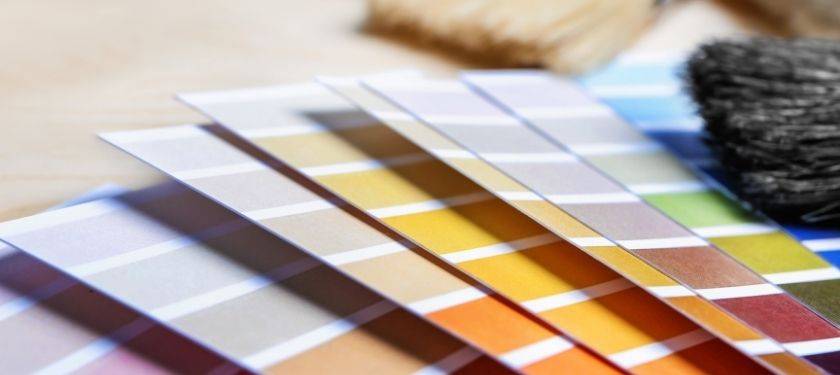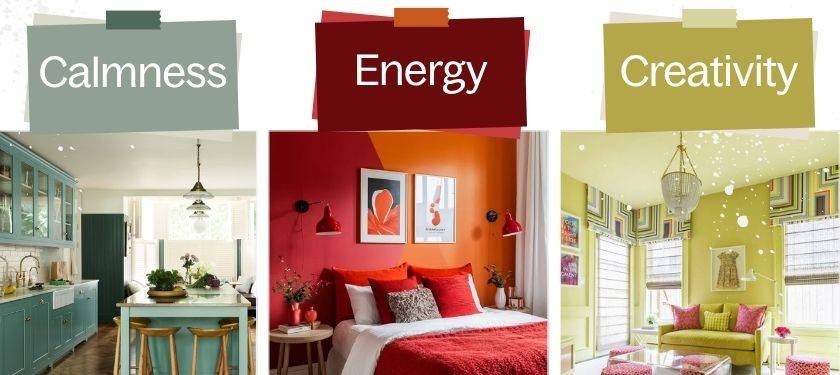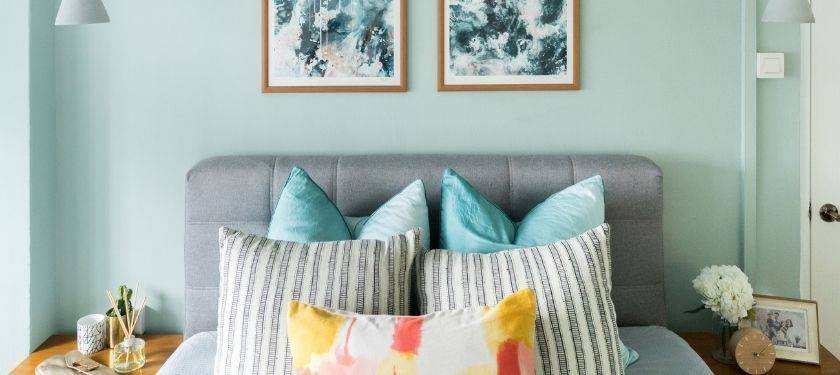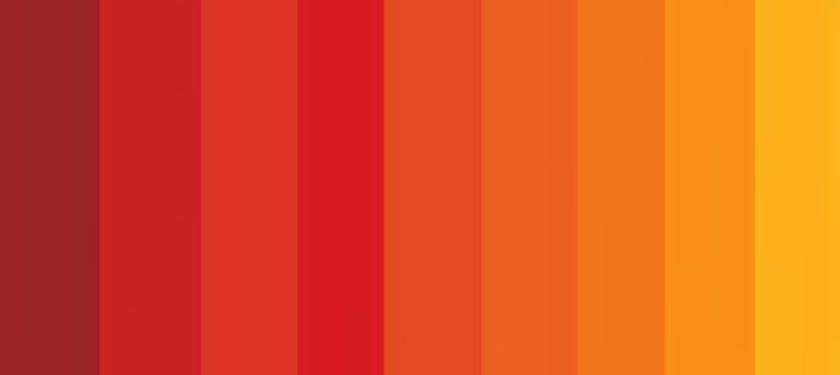Using Color Psychology can help you choose paint that enhances each room’s purpose by guiding you toward the right paint colors for mood, function, and style.
What Are the Psychological Effects of Different Paint Colors?

- Warm Colors (Red, Orange, Yellow): Associated with energy, excitement, and sociability. Commonly used in living rooms and dining areas.
- Cool Colors (Blue, Green, Teal): Associated with calm, focus, and harmony. Ideal for bedrooms and offices.
- Neutral Colors (Gray, Beige, Taupe): Associated with balance and versatility. Suitable for transitional spaces and hallways.
This information illustrates how selecting the right color category sets the foundation for mood and function. Next, explore how hues shape perceptions in interior spaces.
How Do Colors Influence Mood and Emotion in Interior Spaces?
Colors send psychological signals by affecting heart rate, respiratory patterns, and hormone release. For example, blue tones can lower blood pressure and pulse, fostering serenity, while yellow can trigger dopamine production and enhance optimism. Understanding these mechanisms helps you craft spaces that feel intuitively right.
Which Colors Promote Calmness, Energy, or Creativity?

- Calmness: Pale blues and muted greens reduce stress and quiet mental chatter.
- Energy: Bright reds and vibrant oranges raise alertness and stimulate conversation.
- Creativity: Warm yellows and chartreuse inspire positive risk-taking and imaginative thinking
How Do Undertones and Lighting Affect Color Perception?
Undertones (warm, cool, neutral) interact with daylight or artificial light to shift a paint’s appearance. A gray with blue undertones looks cooler in northern light, whereas the same tint appears warmer under incandescent bulbs. Testing swatches at different times ensures your chosen shade aligns with the intended mood.
Which Paint Colors Are Best for Living Rooms to Enhance Socialization and Relaxation?
The living room serves as a hub for conversation and relaxation. Choosing hues that foster openness and ease makes gatherings feel natural and comfortable. Speese Painting’s color consultation service can help you find the perfect balance of warmth and serenity.
Color and Environmental Design
Studies in environmental psychology show that choosing the right paint colors for a space can significantly influence the user’s experience. The choice of color can affect the perception of space and the overall mood of the room. Warm colors are often used to promote sociability, while cool colors are used to promote relaxation.
What Warm Colors Boost Energy and Social Interaction in Living Rooms?
Color Psychology finds warm reds, terra cotta oranges, and golden yellows activate social centers in the brain, encouraging conversation and laughter. A muted coral accent wall paired with neutral furnishings invites guests to linger and engage.
How Do Cool Colors Like Blue and Green Promote Calm and Comfort?

Soft teal or sage green envelops a living area in tranquility, reducing overstimulation and making downtime feel restorative. Cool palettes work especially well in open-plan homes where multiple activities occur simultaneously.
How Can Neutral Colors Provide Versatility and Balance?
- Warm Colors: Promote sociability and energy. An example is Terracotta Orange (#D87A35).
- Cool Colors: Promote relaxation and calm. An example is Sage Green (#A3B18A).
- Neutral Colors: Provide versatility and balance. An example is Warm Greige (#C1B7AE).
What Are the Ideal Paint Colors for Bedrooms to Encourage Rest and Serenity?
Color Psychology in bedrooms demands soothing environments that signal the body to wind down. Calming palettes minimize mental “noise” and support restorative sleep.
Why Are Soft Blues and Muted Greens Recommended for Bedrooms?
How Do Warm Neutrals Create a Soothing Bedroom Ambiance?
How Should Lighting Influence Bedroom Color Choices?
- Daylight-facing rooms benefit from cooler, deeper hues since natural light amplifies softness.
- West-facing rooms pair well with warm neutrals to counteract late-day glare.
- Use dimmable fixtures and warm LED bulbs to maintain color integrity after sunset.
How Can Paint Colors Improve Productivity and Creativity in Home Offices?

Which Colors Enhance Focus and Concentration in Office Spaces In Color Psychology?
How Do Yellow and Orange Stimulate Creativity and Energy?
Why Are Calming Neutrals Important for Balanced Work Environments?
What Paint Colors Stimulate Appetite and Warmth in Kitchens?
How Do Warm Colors Like Red, Orange, and Yellow Affect Appetite In Color Psychology?

What Are the Benefits of Clean and Modern Colors Like White and Gray?
How Do Earthy Tones Promote Comfort and Stability in Kitchens?
FAQs About Color Psychology
Color psychology is the study of how colors impact mood, emotion, and behavior. When applied to interior painting, it helps create spaces that support each room’s function—like calming blues for bedrooms or energizing yellows for kitchens. Speese Painting uses this knowledge to guide Grand Rapids homeowners in selecting colors that feel both beautiful and purposeful.
Warm colors like terracotta, golden yellow, and soft neutrals promote sociability and comfort in living rooms. These tones encourage conversation and relaxation, especially when paired with cozy furnishings and natural light. Our color consultation service ensures your living room supports meaningful gatherings.
Paint undertones shift depending on natural and artificial lighting. For instance, a gray with cool undertones may appear blue in morning light but neutral under warm bulbs. Speese Painting helps clients test swatches under varied lighting to ensure each shade feels right throughout the day.
Soft blues and greens help reduce distractions and enhance concentration, while accents of yellow or apricot boost creativity and mental energy. Our Grand Rapids painting team can help craft a color scheme that keeps your workspace productive and visually inspiring.
Yes! Speese Painting offers expert color consultation and professional interior painting services in Grand Rapids and nearby areas. We blend color psychology with design expertise to choose room-specific palettes that enhance mood, function, and style.
What Homeowners & Business Are Saying About Us Reviews and Testimonials










